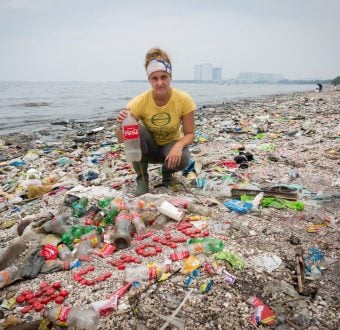One-third of Americans are endangered by potential chemical disasters, yet many are unaware of this hazard or do not know what specific chemicals and processes put them at risk. The petrochemical industry lobby has pushed to keep the public in the dark about the hazards at facilities by emphasizing “security,” claiming that more publicly available information will put facilities at greater risk of sabotage.
The Dangers of Secrecy
As former White House advisor John Podesta observed, “secrecy does not always enhance security; it often undermines it. The American people cannot remain vigilant if they remain ignorant. To be sure, some critical defense and security information must be kept from public view, but strengthening homeland security requires public knowledge of potential threats and public will to take corrective action to deal with unacceptable risks.”
One of these unacceptable risks is the danger that chemical facilities pose to communities across the country, and the restriction of information about them is one example of the ruinous secrecy Podesta describes. Without knowledge of the hazards that endanger them and the solutions to remove or reduce those hazards, communities are in increased danger in the case of an accident and are powerless in demanding safer alternatives from these facilities.
The government has not always ceded to the chemical lobby’s claims that public knowledge of hazards at chemical facilities is a threat to national security. In 1999, the Environmental Protection Agency created its Risk Management Program (RMP) in response to chemical incidents around the world. The program was originally designed to collect RMP reports from facilities and make that information freely available online. But in a prime case of excessive secrecy, the planned database was scrapped and the information was restricted from the public. Podesta notes, “these documents were removed even after the FBI admitted there was no unique terrorist threat from their release.”
The petrochemical lobby, which is hard-set on avoiding safety upgrades to the unnecessarily dangerous facilities it represents, is the main pusher of this destructive secrecy. It spent $64.7 million in 2014—not on making facilities safer—but on convincing lawmakers that they aren’t dangerous to begin with.
Current Transparency Programs Are Inadequate
Government programs meant to improve transparency do exist. When the RMP database was removed from the Internet, the EPA created Reading Rooms across the country where members of the public can read facilities’ RMP plans. Yet knowledge about the Reading Rooms is minimal, access is limited to those who live close to them and are able to visit during the work day, and distribution of the information is discouraged by rules against copying and removal.
Another means of gaining access to government information is the Freedom of Information Act (FOIA), which gives every citizen the right to request information from any government agency. Yet the law’s broad exemptions frequently limit the amount of information that is turned over.
In 2014, Greenpeace submitted a FOIA request for all releasable government communications with the petrochemical industry regarding chemical plant safety. A year later, Greenpeace received information from only one government agency, and within the documents released, information was redacted due to Exemption 5.
Exemption 5 protects “inter-agency or intra-agency memorandums or letters.” It is commonly referred to as the “withhold it because you want to” exemption, and its use “is at an all time high, used 81,752 times in 2013 to deny information.”
This degradation of a key government transparency tool defies the purpose of FOIA as well as the very ideals of democracy. Podesta emphasizes that “public access to government information is a fundamental prerequisite to a functioning democracy.”
The Benefits of Transparency
When the public is informed, chemical facilities are held more accountable for hazards and can be pressured to take steps to minimize risks by implementing inherently safer technology (IST). Greater transparency also enables the public to hold the government accountable for failing to properly monitor and inspect dangerous facilities.
In its upcoming rulemaking on chemical plant safety, the EPA should require facilities to adopt IST wherever feasible. If facilities do not implement IST, their reasoning should be made public. Communities should also have increased access to the types of chemicals used at facilities, the hazards they pose, and the safer alternatives available. This information will pave a path for meaningful dialogue between communities and facilities to help increase safety and trust.



